| Author |
Message |
    
kingfisher
Advanced Member
Username: kingfisher
Post Number: 31
Registered: 01-2013
| | Posted on Monday, February 03, 2020 - 10:49 pm: | 




|
The flywheel on this engine was cracked, so the the crank and flywheel were sent to an engineer to have the flywheel repaired.
Now that I am reassembling I find that the rear cover which supports the back end of the crank doesn't quite mate with the main engine block. There is a gap of about 1.3mm. I can tighten the bolts but the crank is held so tight then that it is very difficult to turn.
In theory nothing has changed since it was dismantled, but clearly something has. There is no adjustment on the supporting bushes. They are pressed in against a shoulder.
I don't see any solution except a thicker gasket. Any ideas?
And if a thick gasket is the answer, how thick - that is, how tight should the end plate be against the crank?
The engine before the flywheel cracked
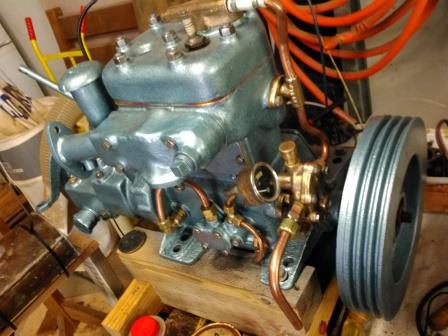
The gap in question
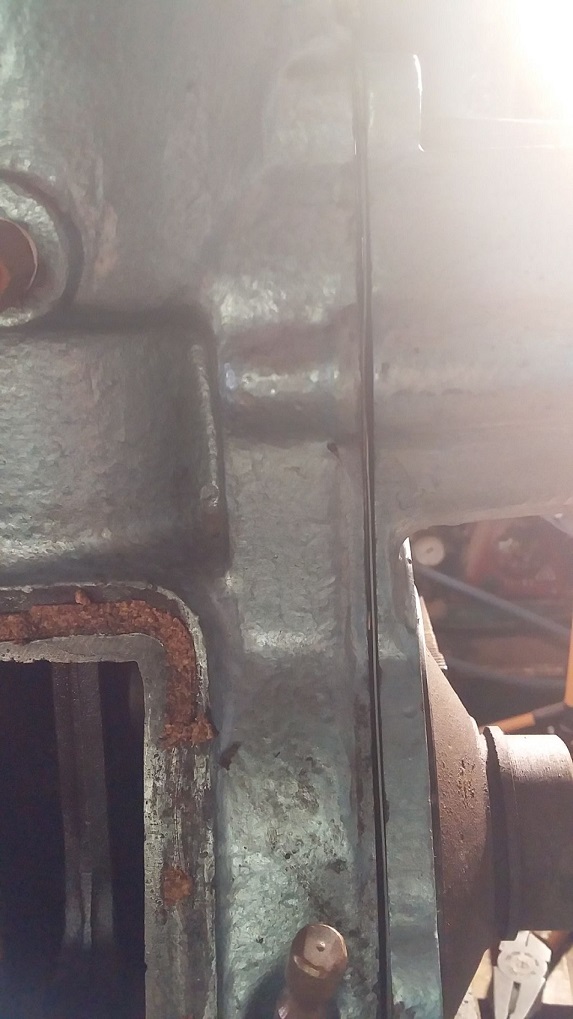
Another view of the gap
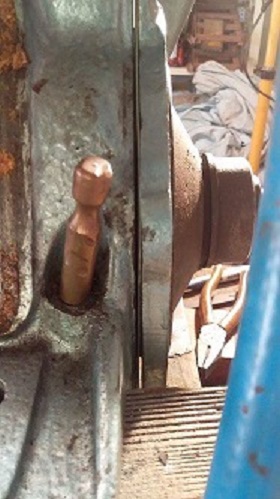
View from the rear
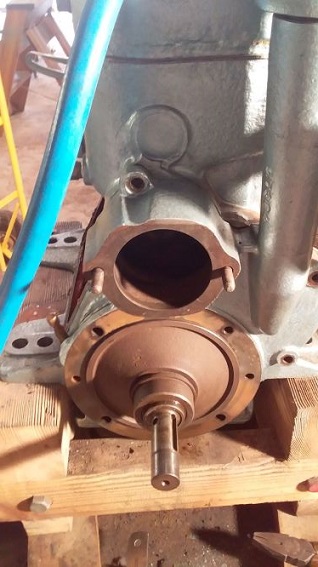
The crank gear against which the bush seats
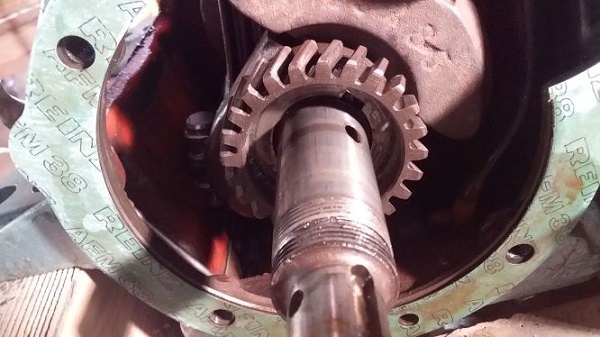
Bush pressed into the rear plate
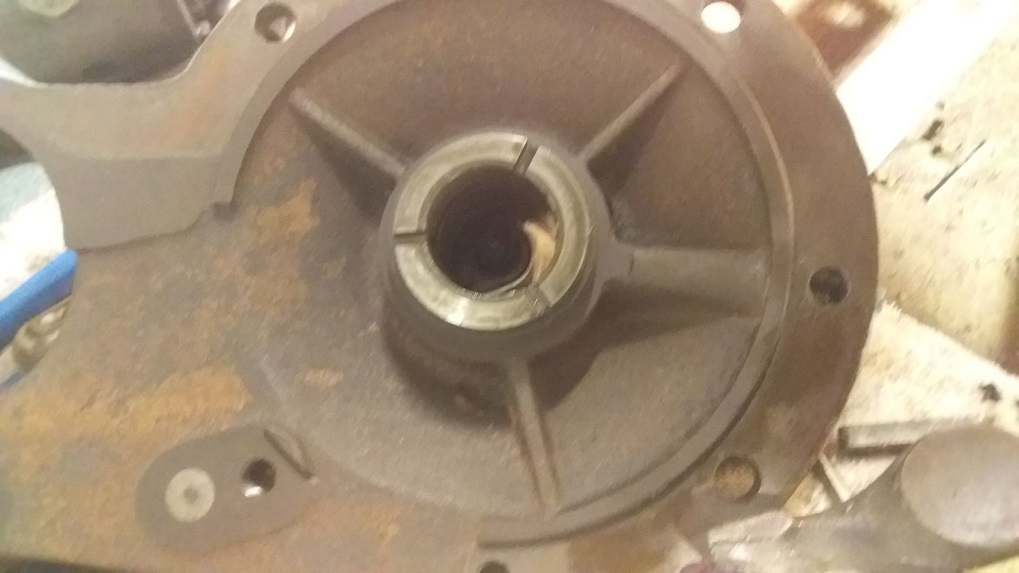 |
    
kingfisher
Advanced Member
Username: kingfisher
Post Number: 32
Registered: 01-2013
| | Posted on Tuesday, February 04, 2020 - 06:52 pm: | 




|
I replaced the gasket last night with a washer on each bolt. The washers measured .045" or about 1.1mm. Spacing appeared to be good in that the crank turned over easily with no noticeable end play. So maybe it had a thick gasket before - I don't recall.
How much end play should there be?
Thanks, Mark |
    
narrabay2
Member
Username: narrabay2
Post Number: 24
Registered: 10-2019
| | Posted on Wednesday, February 05, 2020 - 10:37 pm: | 




|
I am no expert but as a general mechanic, I would suggest you want to leave *some* small amount of end play to accommodate thermal expansion (unless the block expands more than the crank, but you still want to start with some). A few thousandths but others here should eventually give you a hard number. Here is a link to a discussion on this exact process. including mention of using a dial indicator.
https://www.smokstak.com/forum/threads/crankshaft-end-play-gasket-thickness.2945 6/https://www.smokstak.com/forum/threads/crankshaft-end-play-gasket-thickness.2945 6/ |
    
kingfisher
Advanced Member
Username: kingfisher
Post Number: 33
Registered: 01-2013
| | Posted on Thursday, February 06, 2020 - 04:21 pm: | 




|
That's an excellent discussion. I reckon I can measure the end play with a feeler gauge internally through the side plate.
So all I need now is a number? How much do I allow? |
    
narrabay2
Member
Username: narrabay2
Post Number: 25
Registered: 10-2019
| | Posted on Friday, February 07, 2020 - 12:09 pm: | 




|
KF, while waiting for that end-play spec (and maybe google might turn op the albin specs documentation), I started out wanting one of those. As a kid I built inboard rowboats using an old cast iron briggs, and I knew then that I liked low rpm, cast iron, and boats.
This Albin 021 video (below) inspired me to do that again except water cooled. Recently, there was one of these in apparent excellent shape on craigslist in CT that I almost bought. But too much on my plate so I passed it up. Wasnt easy.
Great Albin 021 video:
https://youtu.be/Ls6s4UyYYuE |
    
narrabay2
Member
Username: narrabay2
Post Number: 26
Registered: 10-2019
| | Posted on Friday, February 07, 2020 - 12:12 pm: | 




|
BTW where was that flywheel cracked and how was it repaired? Will you be running this? In a boat? I'd maybe double check that it was approached safely. A chunk of cast iron could do a lot of damage if it came apart at speed. |
    
kingfisher
Advanced Member
Username: kingfisher
Post Number: 34
Registered: 01-2013
| | Posted on Friday, February 07, 2020 - 07:29 pm: | 




|
The flywheel cracked at the hub. We had a new one cast, I got the engine started,and it ran beautifully. On the second start, the new flywheel cracked too. So now a steel hub has been machined and bolted in it's place. A lot of mucking around, but it runs so sweetly I'm persisting. Yes, it will be used in a boat, a 21' �arvel that I'm restoring.
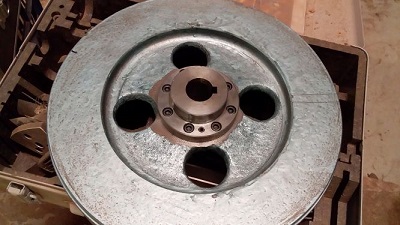 |
    
kingfisher
Advanced Member
Username: kingfisher
Post Number: 35
Registered: 01-2013
| | Posted on Sunday, May 17, 2020 - 07:53 pm: | 




|
There has been a lot of discussion with various mates about this. And we considered several options including a thicker gasket and machining down the bush. Another mate was looking at it Saturday and insisted that something else must be in error. So we pulled the crank out again and discovered a small burr on one of the counterweights. This burr was preventing the crank from seating fully. A few strokes with a file and all is perfect again. A big relief!! So it's all back together now awaiting some fresh oil which I'll purchase tomorrow. And then, fingers crossed.... |
    
chris_spring
Advanced Member
Username: chris_spring
Post Number: 39
Registered: 02-2019
| | Posted on Sunday, May 17, 2020 - 08:41 pm: | 




|
I hope it goes well.
Cheers! |
    
kingfisher
Advanced Member
Username: kingfisher
Post Number: 36
Registered: 01-2013
| | Posted on Sunday, May 24, 2020 - 01:01 am: | 




|
Well it did all go reasonably well - for a while. The video shows the engine running although still needing a bit of a tune up.
https://www.youtube.com/watch?v=Tc_wlmOIItU
We played with the carby quite a bit but couldn't get very far and figured it really needed a good birthday. But then the inlet must have been overtightened and it cracked.
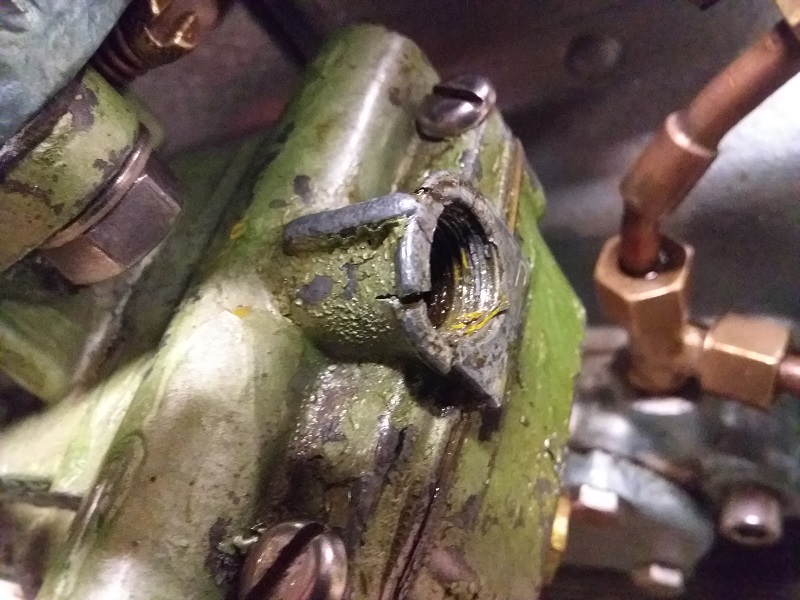 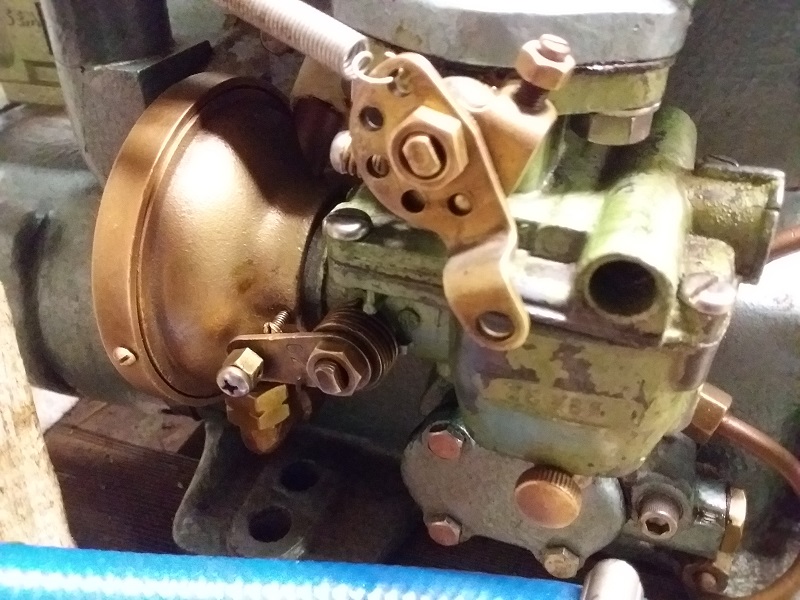
So I reckon a replacement is in order.
The original is a Solex 26 VBN. I'm not obsessed with keeping with the same brand and model but I guess the choice will need to match a .88 litre / 54 ci engine. Any thoughts on what may suit?
Thanks, Mark |
    
narrabay2
Senior Member
Username: narrabay2
Post Number: 54
Registered: 10-2019
| | Posted on Wednesday, May 27, 2020 - 07:10 pm: | 




|
In think that inlet could be fixed. Either drill small crack-stop hole at the end of each crack, and then drill/tap the hole deeper if there's material available.
OR, easier to try first, clean it up REALLY REALLY well shiny shiny bare metal, and JB weld a hose barb in there.
I have seen JB weld used inside (yes inside) cylinders to level out gouges.
It would get you back on track... |
    
kingfisher
Advanced Member
Username: kingfisher
Post Number: 37
Registered: 01-2013
| | Posted on Thursday, May 28, 2020 - 07:38 pm: | 




|
That's certainly an option and if I can't source a suitable replacement, I will head down that track.
The carby has a few other issues including:
- needle/seat are possibly incorrect
- throttle shaft very loose therefore letting in air
- fuel bowl drain prone to leaking
So I reckon it will need a full recon if I keep it. It seems the same carby was used on French made Farmall tractors as was a Zenith 24T2 which is still made. So I'm trying (with some difficulty at present) to check the dimensions of this to see if it suits. |
    
narrabay2
Senior Member
Username: narrabay2
Post Number: 59
Registered: 10-2019
| | Posted on Friday, June 05, 2020 - 04:11 pm: | 




|
When u mentioned a differnt carbureter option, it jogged my memory about something Dick Day said in his YT article ion this board regarding the YT engines, just something to keep in mind:
"With the passing of the safe boating act in 1940 the Zenith Marine Carburetor, 61 series was used. See Photo marked 1940 intake. This carburetor is slightly different from the Zenith industrial version in that it has an intake throat slanted upward to keep gasoline from running out when "choking" the engine to start. A gasoline pick up tube to clear the throat once the engine starts is included. Provision to mount the backfire trap on the inlet to the throat is made. The industrial or marine carburetor works equally well but DON'T use the industrial carburetor in a boat."
http://www.oldmarineengine.com/history/Palmer/Palmer%20YT%20Article.htm
|
    
kingfisher
Advanced Member
Username: kingfisher
Post Number: 38
Registered: 01-2013
| | Posted on Monday, June 08, 2020 - 02:55 am: | 




|
A very good point. The Solex carb has a a pick up tube to clear excess fuel too. I'll be sure to check whatever I end up with.
At this stage I have ordered one of these. It was used on a Farmall tractor that I think also used the Solex 26 VBN carb. It is cheap enough to take a chance.
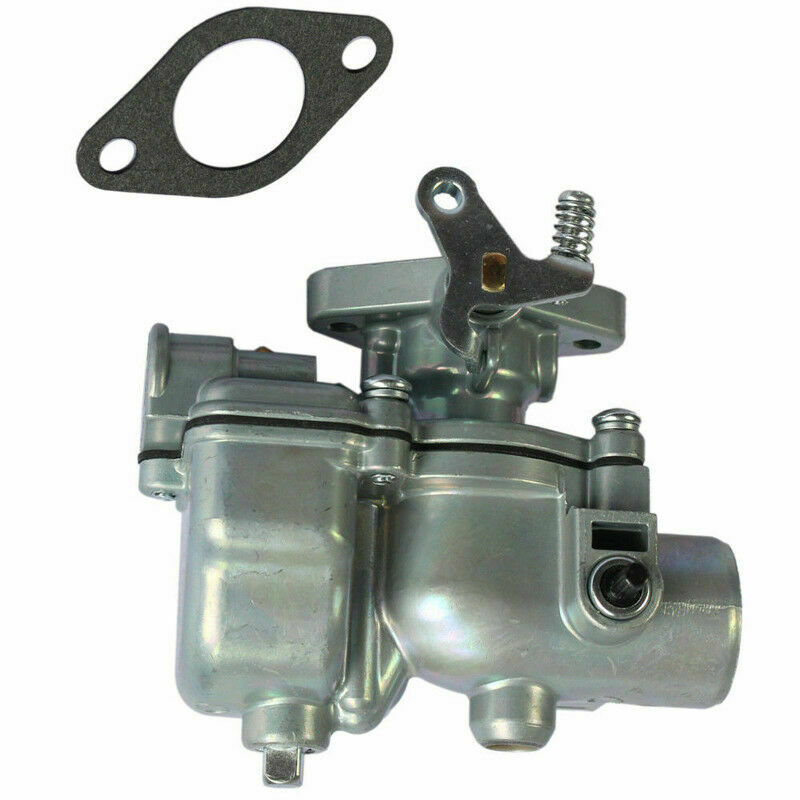 |


